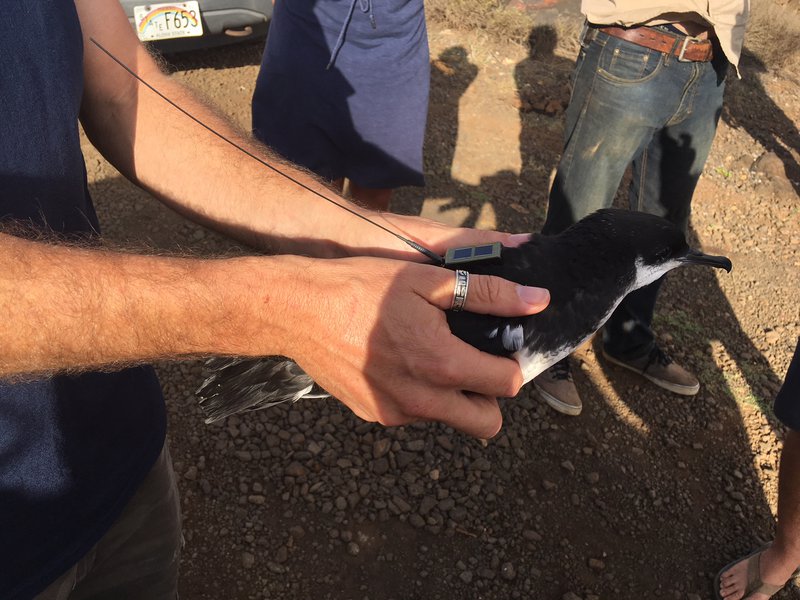For Immediate Release, June 30, 2021
|
Contact: |
Maxx Phillips, Center for Biological Diversity, (808) 284-0007, mphillips@biologicaldiversity.org |
Environmentalists Set Deadline for Hawai‘i Department of Transportation to Fix Lights That Injure, Kill Rare Birds on Maui, Lāna‘i
HONOLULU— Two conservation groups today provided formal notice of their intent to sue the Hawai‘i Department of Transportation if it fails to take immediate steps to prevent bright lighting at state-operated airports and harbors on Maui and Lāna‘i from killing and injuring three species of critically imperiled seabirds.
The Newell’s shearwater is a threatened species, and Hawaiian petrels and band-rumped storm petrels in Hawai‘i are endangered species. According to today’s notice from the Conservation Council for Hawai‘i and the Center for Biological Diversity, represented by the nonprofit law firm Earthjustice, the department’s continued failure to protect these native seabirds from harmful operations at its facilities violates the federal Endangered Species Act.
In August 2017 the Center and Conservation Council sued the department to stop the deaths of these seabirds at facilities on Kaua‘i. The seabirds circle the bright lights at the department's facilities until they fall to the ground from exhaustion or crash into nearby buildings.
Bright lights have contributed significantly to the catastrophic 94% decline in the population of threatened Newell’s shearwaters on Kaua‘i since the 1990s. They have also harmed endangered Hawaiian petrels, whose numbers on Kaua‘i have plummeted by 78% in the same period.
“We’re saddened that it may take another legal action to force the transportation department to stop ignoring its facilities’ role in the senseless deaths of Hawai‘i’s imperiled seabirds,” said Maxx Phillips, the Center’s Hawai‘i director and staff attorney. “There’s no reason why the state should be allowed to continue flouting the Endangered Species Act when simple measures could ensure bird safety.”
“The Department of Transportation has already taken steps to stop killing and injuring imperiled seabirds on Kaua‘i, so the department knows what to do,” said Leinā‘ala Ley, an attorney with Earthjustice. “To save these birds from extinction, the department needs to implement similar measures immediately on Maui and Lāna‘i. There’s no time to waste.”
“State agencies should set the gold standard for protecting Hawai‘i’s wildlife,” said Moana Bjur, executive director of the Conservation Council for Hawai‘i. “Private landowners, companies and other organizations are expected to comply with Endangered Species Act rules and standards. The department’s failure to file habitat conservation plans for their airports and harbors is negligent and unacceptable.”
The largest Hawaiian petrel breeding colony is located on Maui in Haleakalā crater, and the second-largest breeding colony is located on Lāna‘i. A breeding colony of Band-rumped Storm petrels was recently discovered at Hauola Gulch on Lāna‘i and is only the third such colony to be identified in the state, making it an important site for future efforts to protect and recover this species.
The department’s airport and harbor facilities are among the largest documented sources of seabird deaths from light attraction on Maui and Lāna‘i. The lights used by these facilities are tall, freestanding and exceptionally bright, making them attractive to the threatened and endangered seabirds. Additionally, coastal lights like those at Kahului Airport and Kahului Harbor cause more fallout than inland lights, meaning these lights are particularly dangerous for the seabirds.
The groups seek to compel the department to comply with its obligations under the Endangered Species Act by securing incidental take permit coverage for its activities on the two islands. As part of permitting, the department must develop a habitat conservation plan specifying measures it will take to minimize and mitigate harm, such as shielding or eliminating its bright lights, and fencing nesting colonies to prevent predation of nesting seabirds and their chicks. The Act requires that citizens provide 60 days' advance notice before filing a lawsuit to address illegal activities.

The Center for Biological Diversity is a national, nonprofit conservation organization with more than 1.7 million members and online activists dedicated to the protection of endangered species and wild places.

